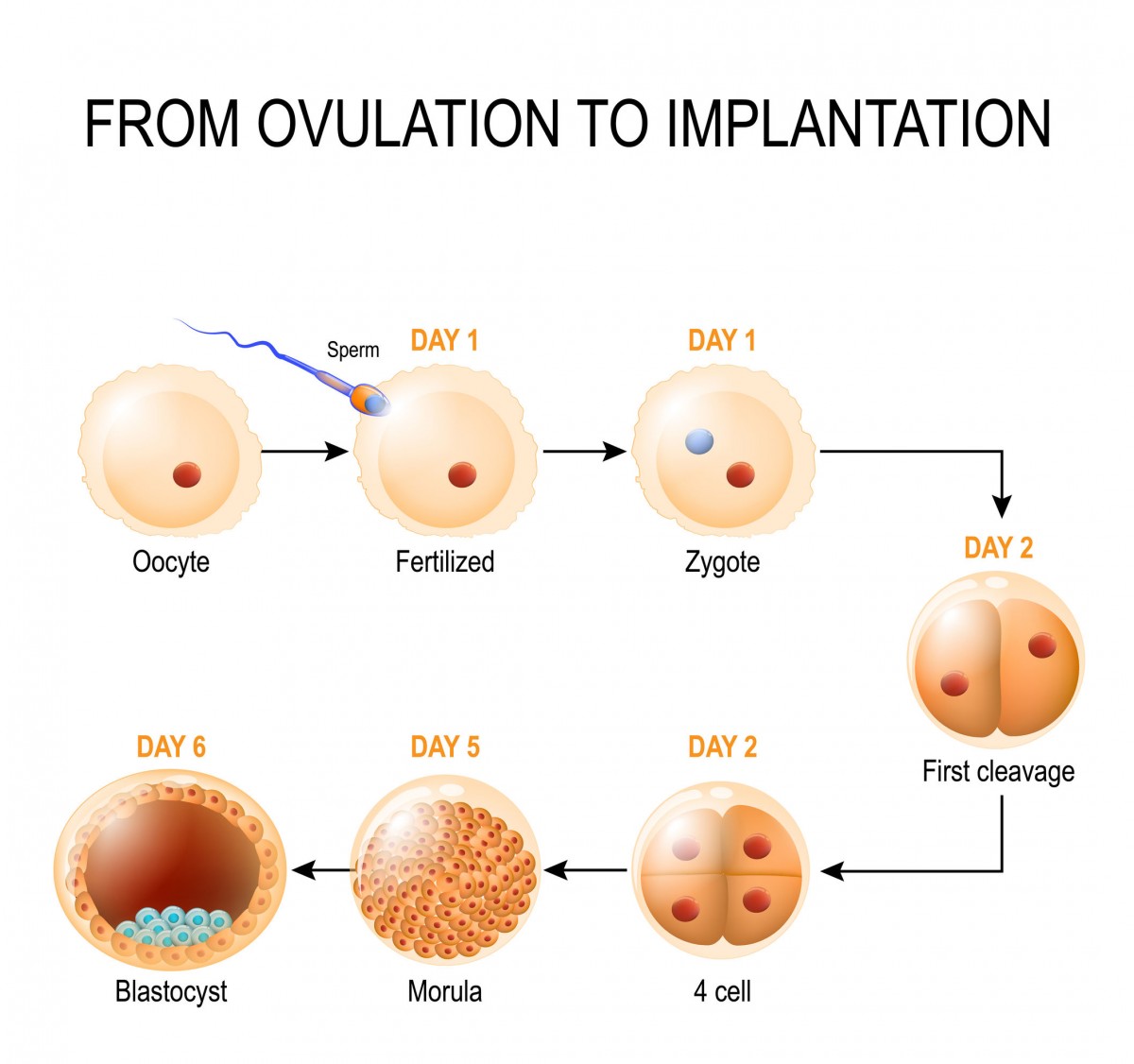Every month your ovaries release an egg during ovulation. This egg will travel to the fallopian tube, where it has approximately 24 hours to become fertilized by sperm. While this window is relatively small, sperm can survive for up to 5 days hanging out, waiting for an egg to appear. This longer sperm lifespan means having sex before ovulation as well as on the day of ovulation can increase your odds of fertilization. So feel free to get busy!
Once the sperm penetrates the egg, a chemical reaction forms a barrier to prevent other sperm from entering. As the egg and sperm, chromosomes match up, a zygote forms. While the zygote is still in the fallopian tube, it will begin to divide until it becomes a group of 32+ cells called a blastocyst.
Here is a time-lapse video of the process of fertilization to blastocyst.The blastocyst will travel down the fallopian tube to the uterus, where it will implant into the thick uterine lining your body creates every month in preparation for a potential fertilized egg. Implantation usually occurs about 6-8 days after fertilization and can result in minor cramping or blood spotting. These symptoms are sometimes confused with PMS. If you have excessive bleeding or painful cramping that does not subside, you should contact your doctor.
Reference Source
- American Pregnancy Association - Week 3 Pregnancy
- American Pregnancy Association - Early Fetal Development


